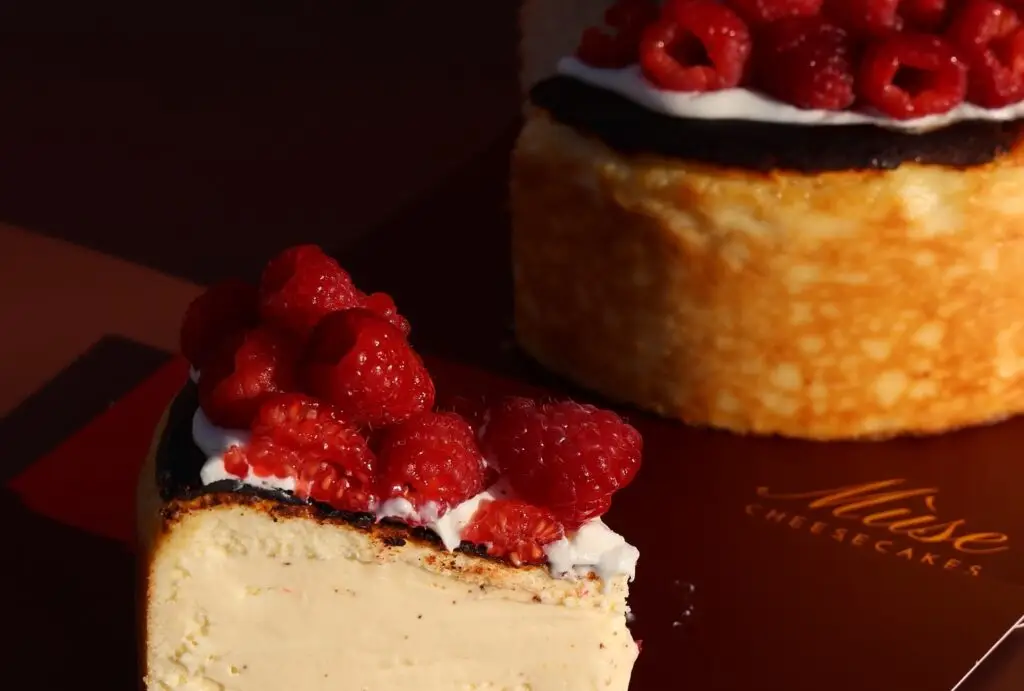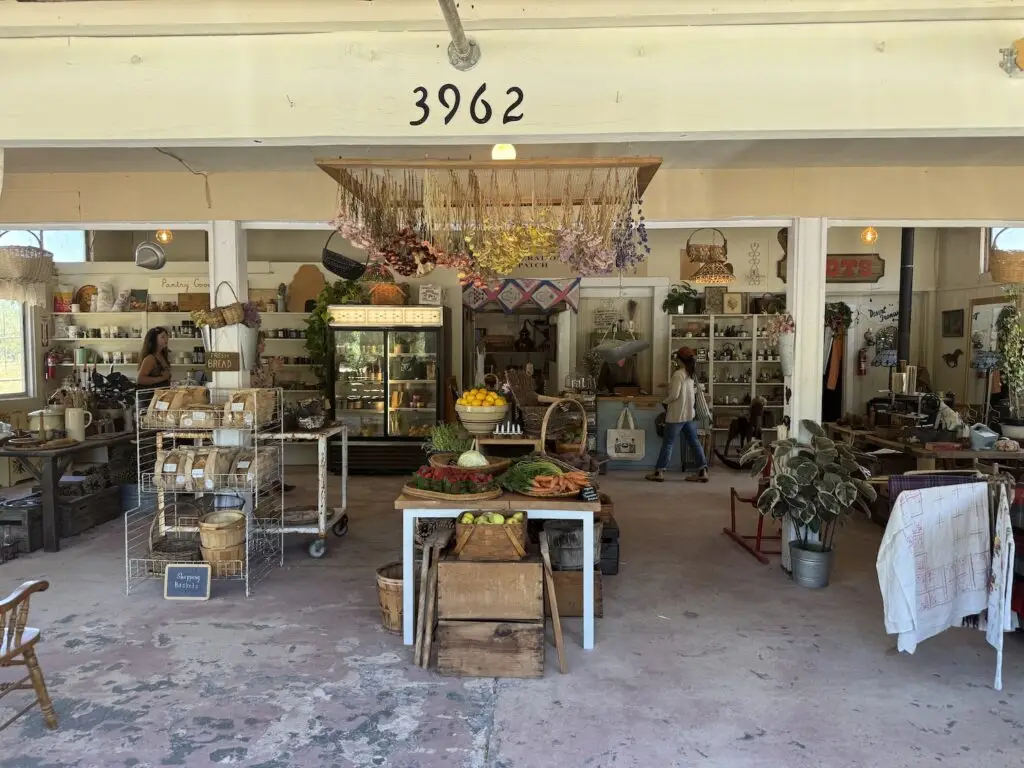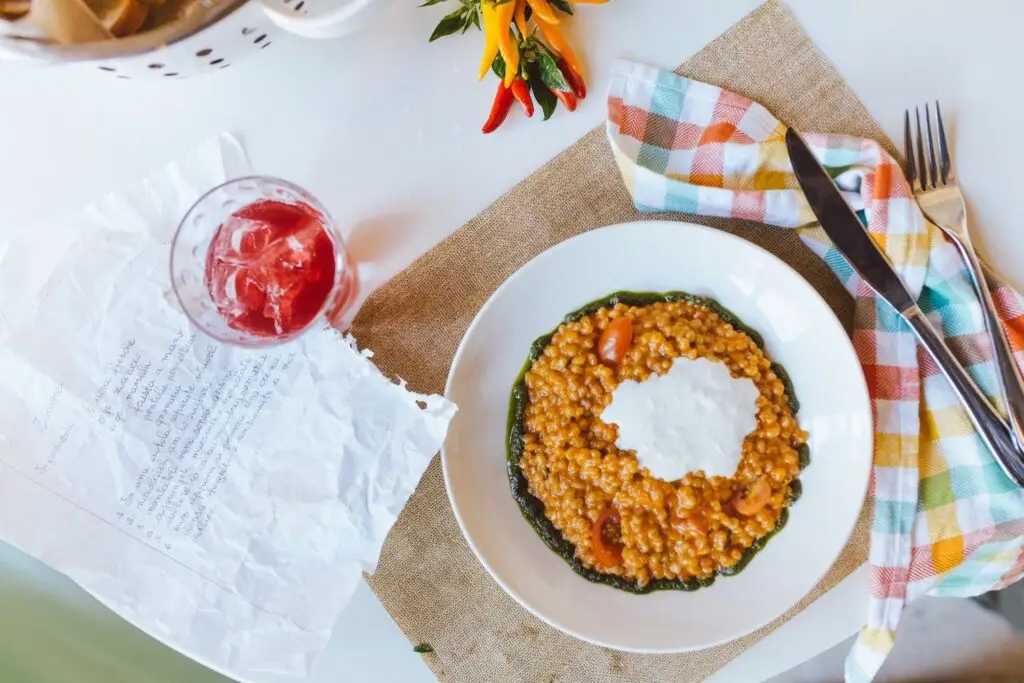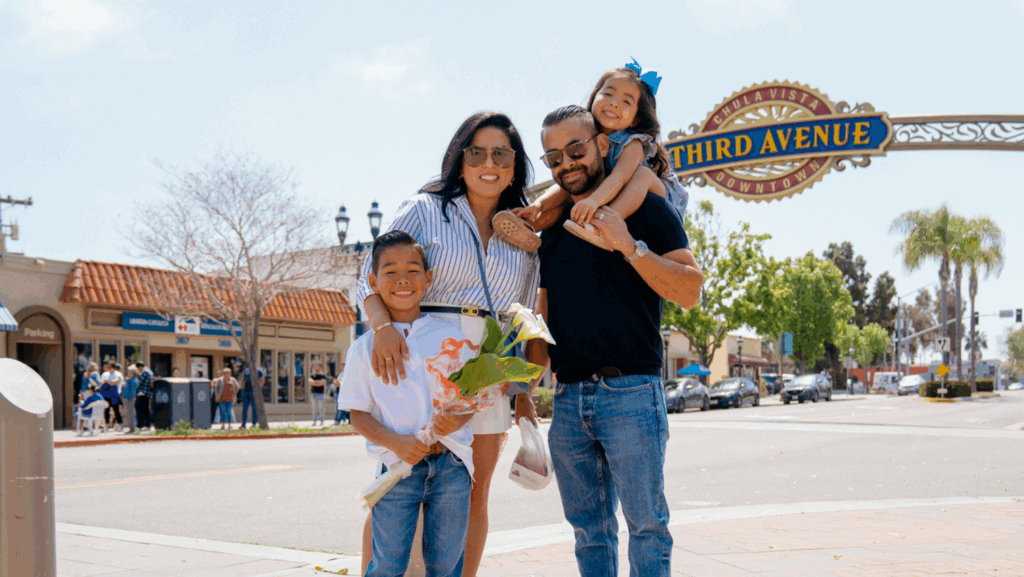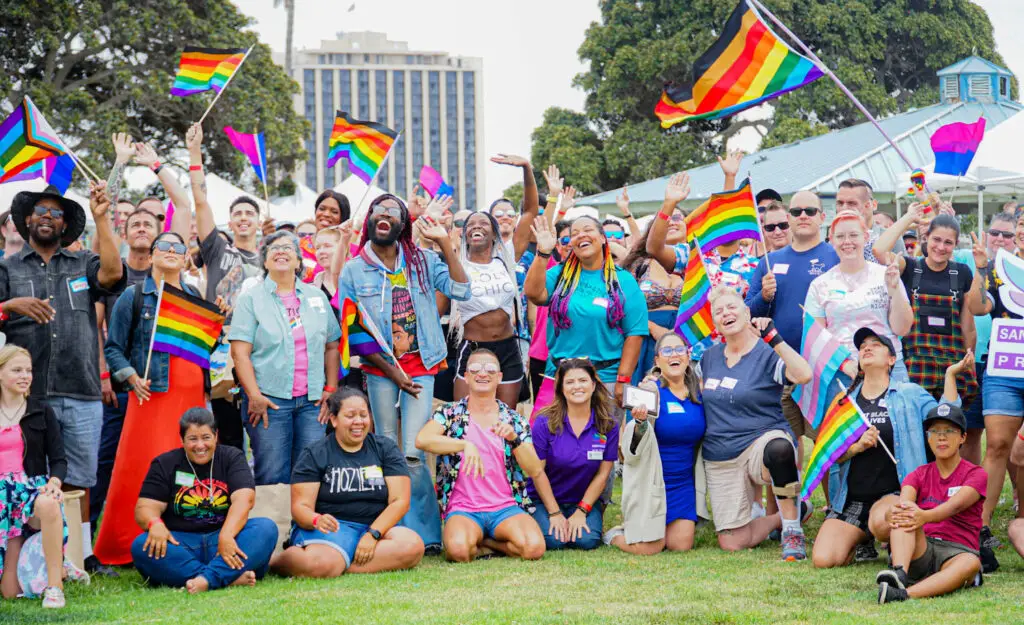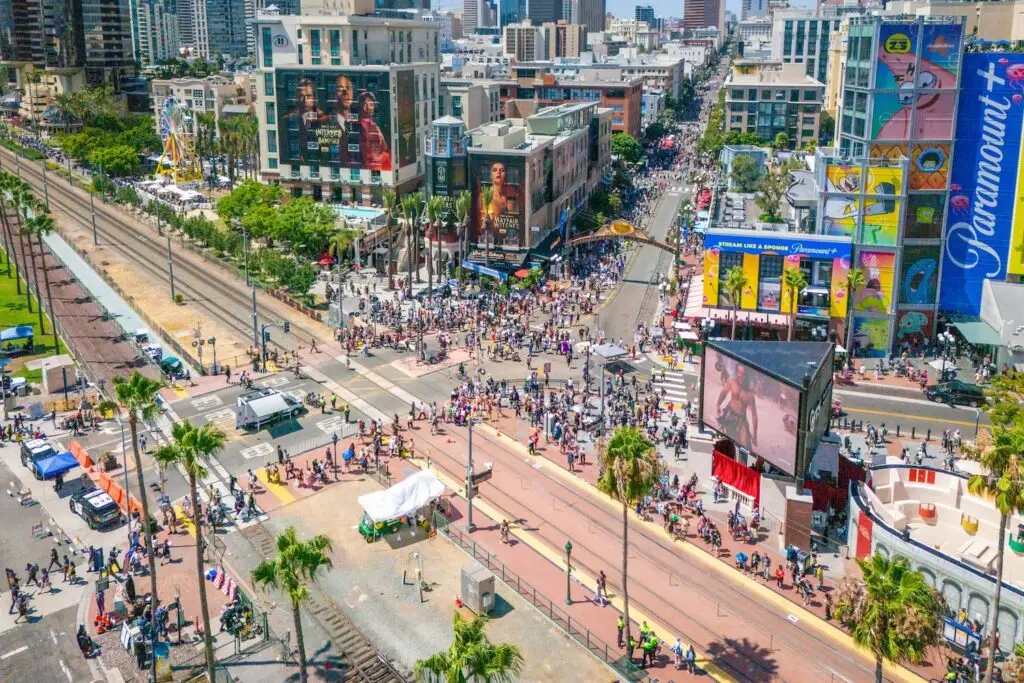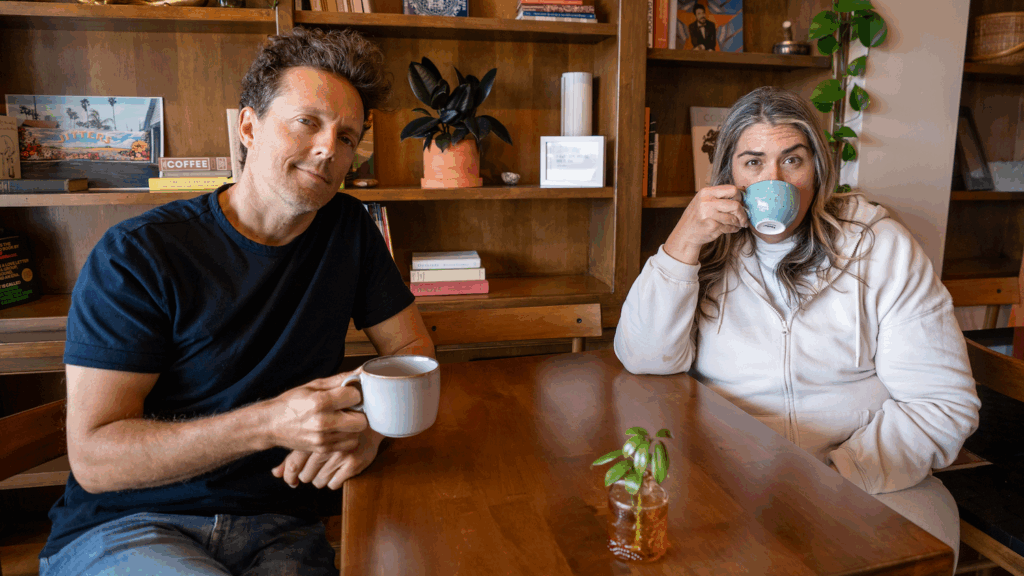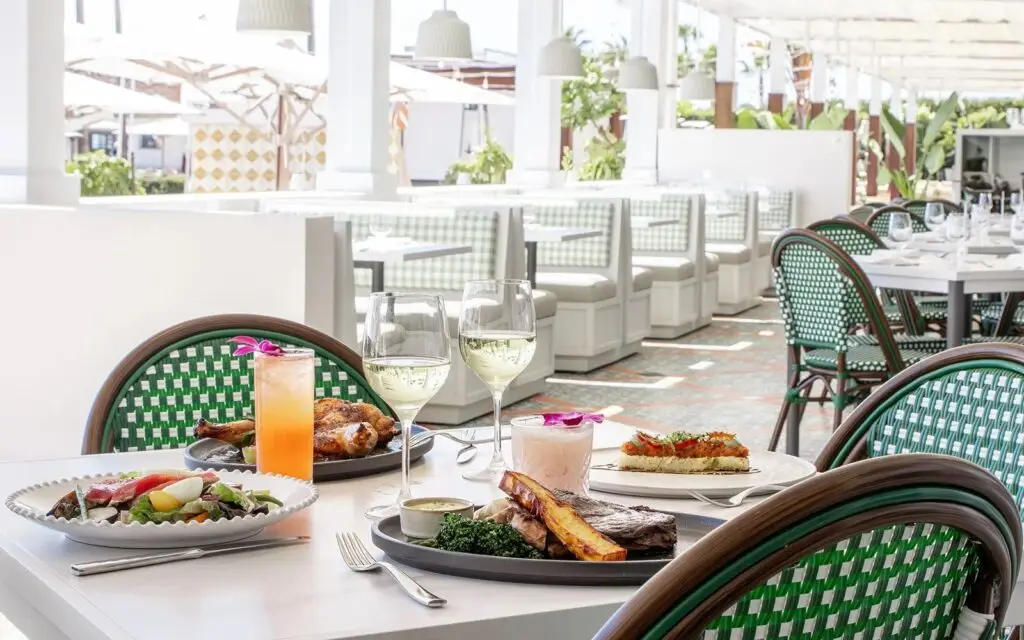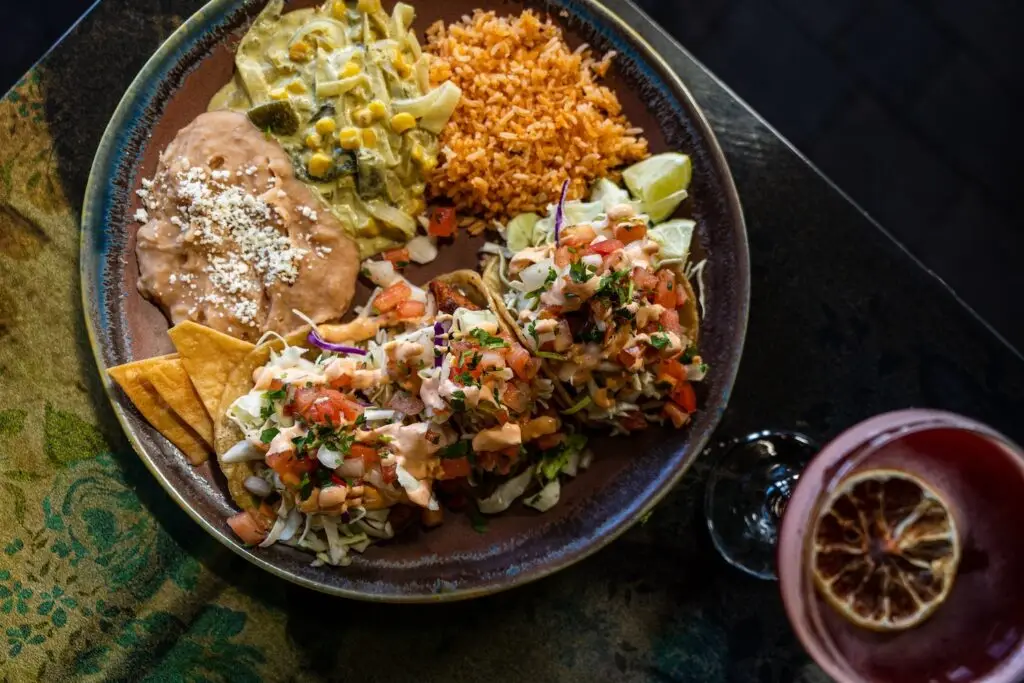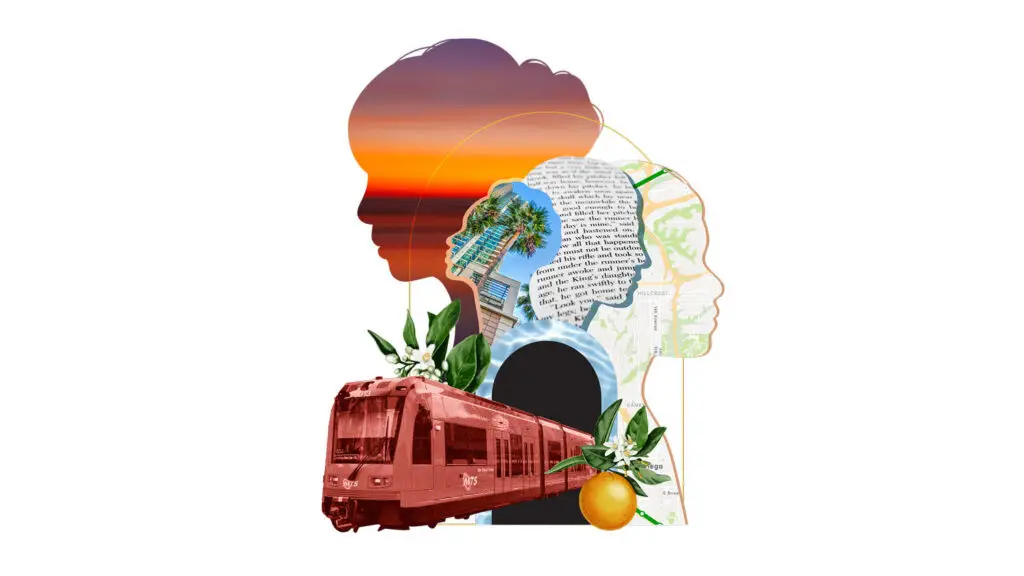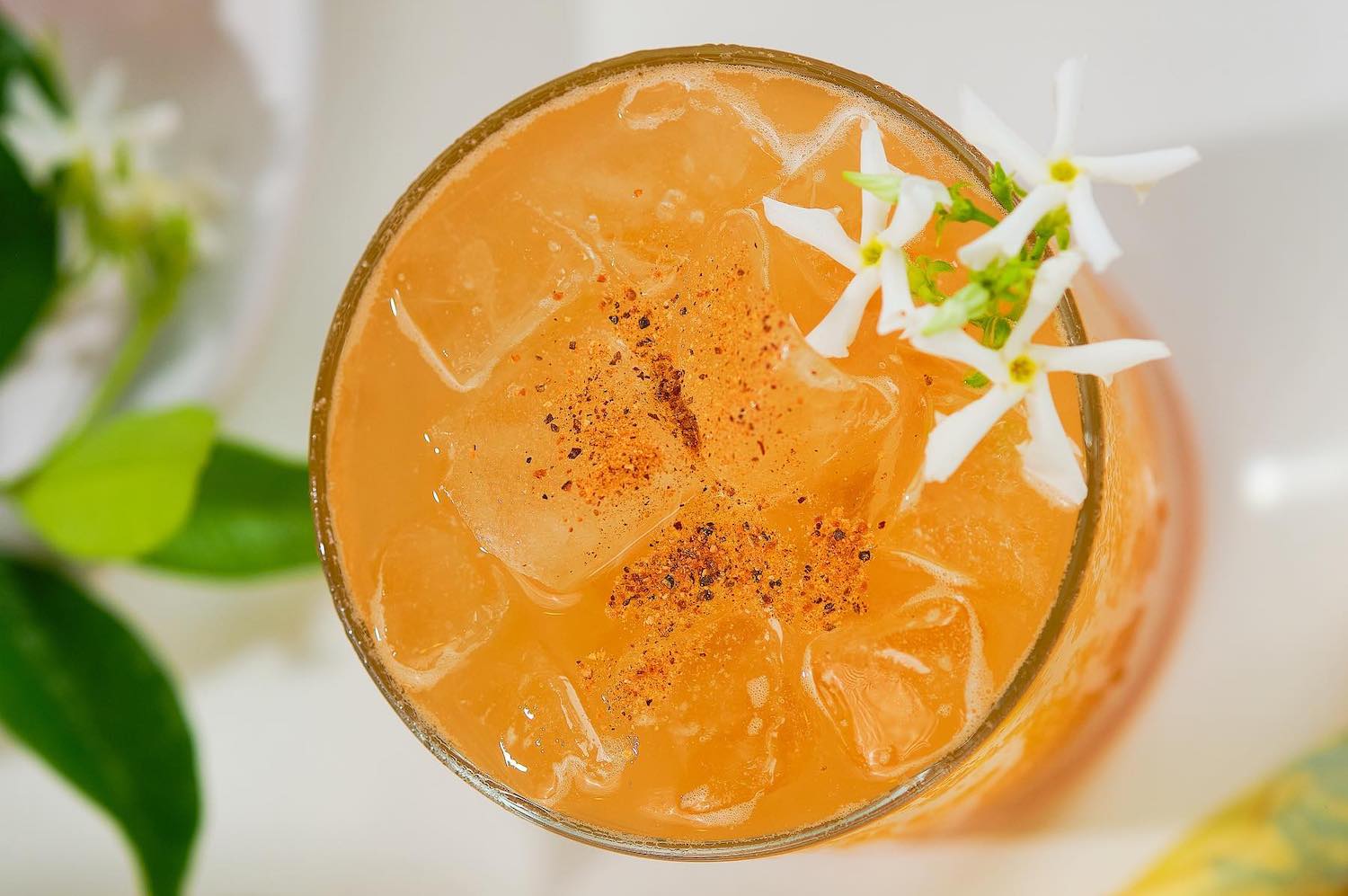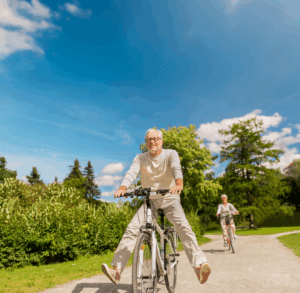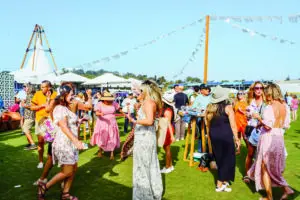Grace Mestecky swears her zero-proof Smoke and Mirrors cocktail tastes so much like a typical old fashioned that people can’t believe it isn’t one. The mix of non-alcoholic whiskey, black cardamom, orange bitters, burned honey, and a Chinese tea called lapsang souchong is such a far cry from the soda water and lime usually served to mocktail-seeking patrons that skepticism is a given. But it rarely lasts past the first sip.
“People don’t always understand the concept,” says Mestecky, who co-owns Moon Flower, a new zero-proof cocktail lounge in Normal Heights. “But I think that’s the way it is for anything innovative and new. When they see the thought and intention behind the drink, it sells them pretty fast.”
Though they stick out from the hundreds of breweries, dives, and clubs you’ll find in San Diego, sober bars are not new. Once referred to as temperance bars, they first gained popularity in the United States in the early 1800s as a moralistic alternative to rowdy saloons. As time went on, they evolved into soda fountains, ice cream parlors, and other social spaces that don’t necessarily need the alcohol-free label. Now America’s drinkers want that label back.
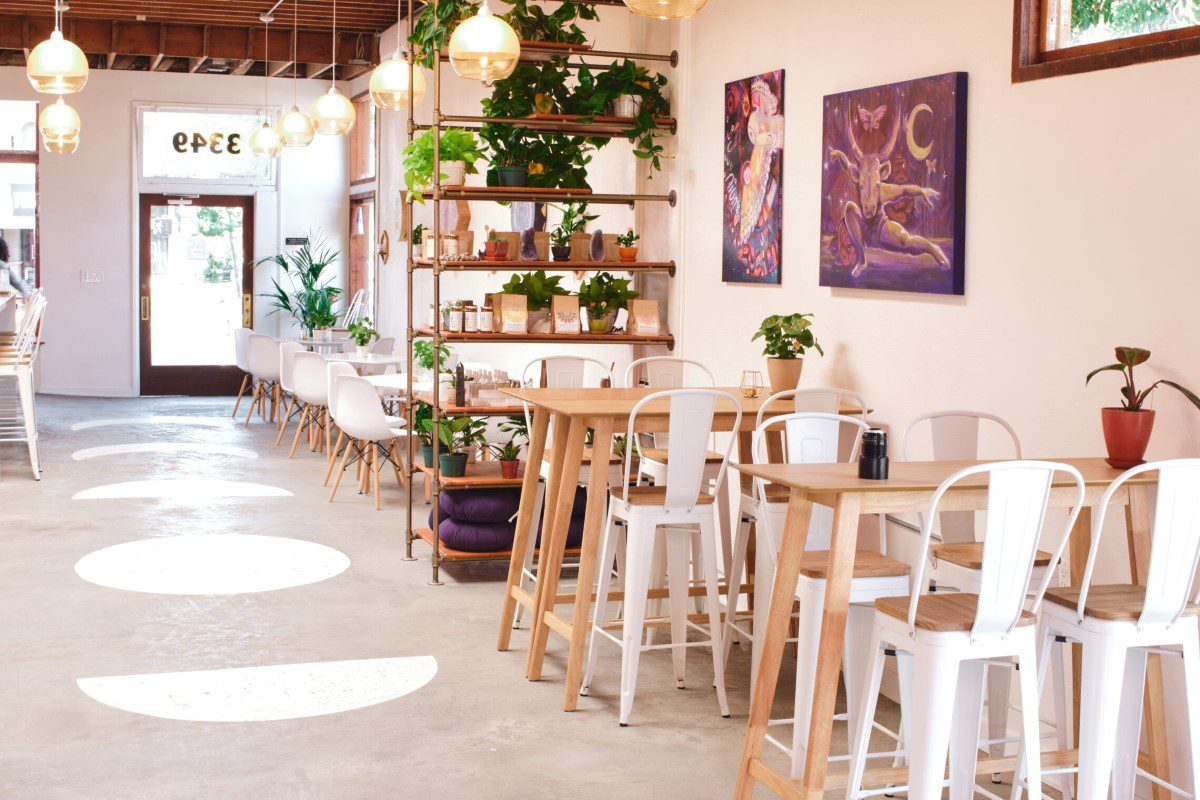
While limited, sober options do exist in San Diego
A 2023 study on non-alcoholic drink consumption found that 86 percent of Americans don’t have access to a sober bar, and 51 percent wish they did. Of the top 50 major cities, New York City has the most dry drink establishments, followed by Mesa, Arizona, and Denver, Colorado. Even though half of local residents surveyed said they want a booze-free neighborhood joint, San Diego is tied with Boston, Massachusetts, for dead-last with just two sober bars. And one of them is technically a tea house.
That’s not to say San Diego doesn’t have sober (and sober-ish) options. Gia Giambalvo and Sarah Girdzius of Mnemonic Coffee in Bankers Hill offer a zero-proof menu in addition to their lattes for folks who want to enjoy the communal feel of a café without downing multiple cups of caffeine. Brianna Wilkerson of The Beverage Botanist recently launched a low-ABV social club that hosts intentional gatherings twice a month to help people make connections sans liquid courage.
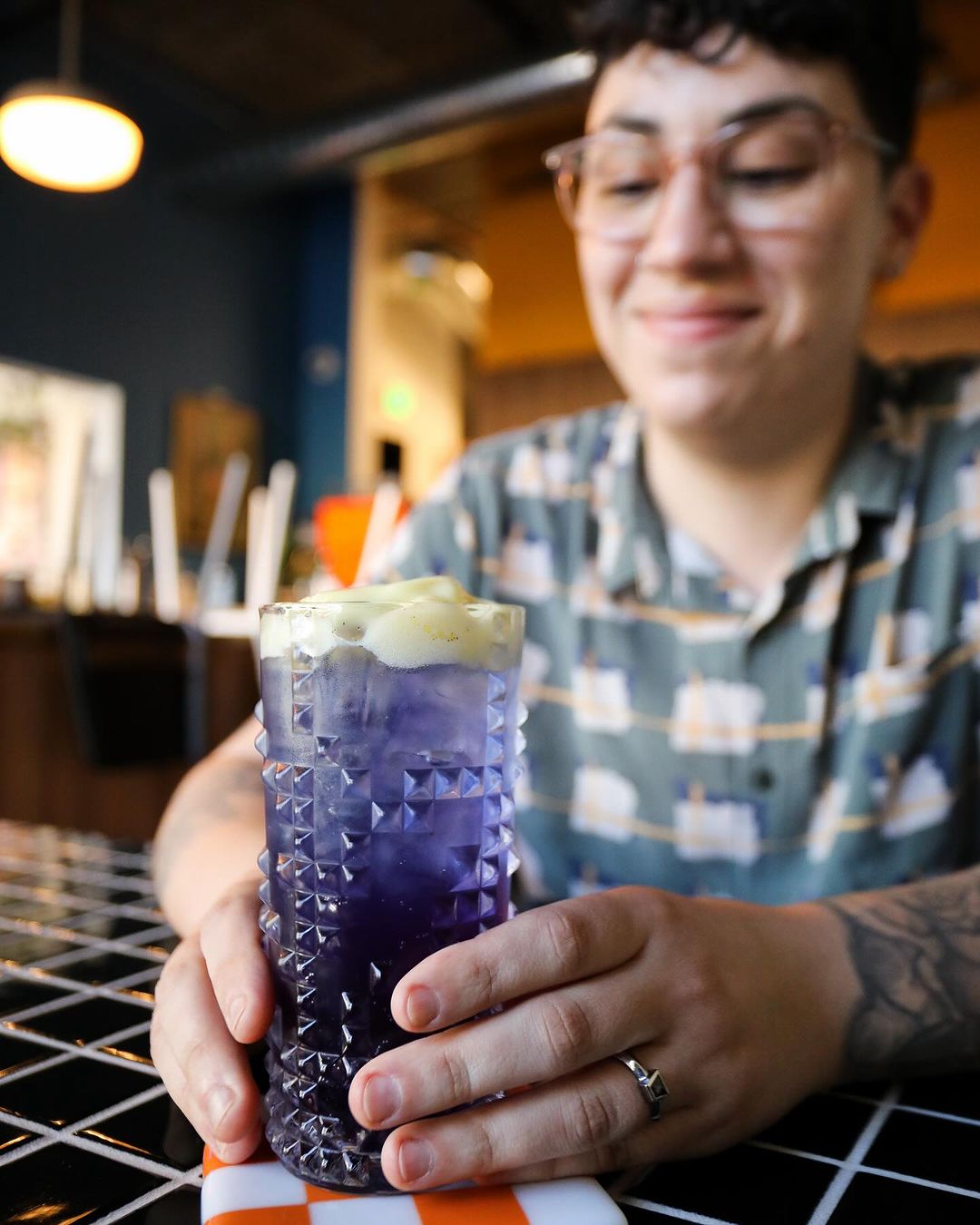
Marcos Salazar, CEO of the Adult Non-Alcoholic Beverage Association (ANBA), says that the demand for sober bars is there, but it’s not solely from the demographic of people who abstain entirely. About 94 percent of people who buy NA beverages still drink alcohol. The modern-day sober bar is less about promoting an alcohol-free lifestyle and more about offering an inclusive space that welcomes those who don’t drink, can’t drink, or simply want the option not to, like Mestecky.
“I’m very lucky to have a healthy relationship with alcohol,” Mestecky says. “I can either imbibe or not. And if I feel like I’m going to have a drink for the wrong reason, I have all these beautiful non-alcoholic drinks to choose from. That hasn’t been the reality for most people.”
It was only kismet that, when she started dabbling in NA cocktails, she stumbled upon a bartender position at Awake Denver, the city’s first sober bar. When they closed to find a new location, the 25-year-old decided to see what opportunities San Diego had for zero-proof bartending. A few part-time gigs, some consulting work, and one NA pop-up bar at Burning Man later, and Mestecky opened up Moon Flower inside Maya Moon Collective with owner Kathryn Rogers.
The NA cocktail lounge takes over Rogers’ cacao cafe and organic chocolate shop from 5 p.m. to 10 p.m. every Thursday through Sunday. It offers booze-free riffs of your favorite adult drinks with an adaptogen twist—as well as a sober nightlife option.
“Unless you’re taking an 8 p.m. yoga class, there’s no nightlife that doesn’t surround alcohol,” Mestecky says. “I would love to go to a non-alcoholic bar that’s not my own.”
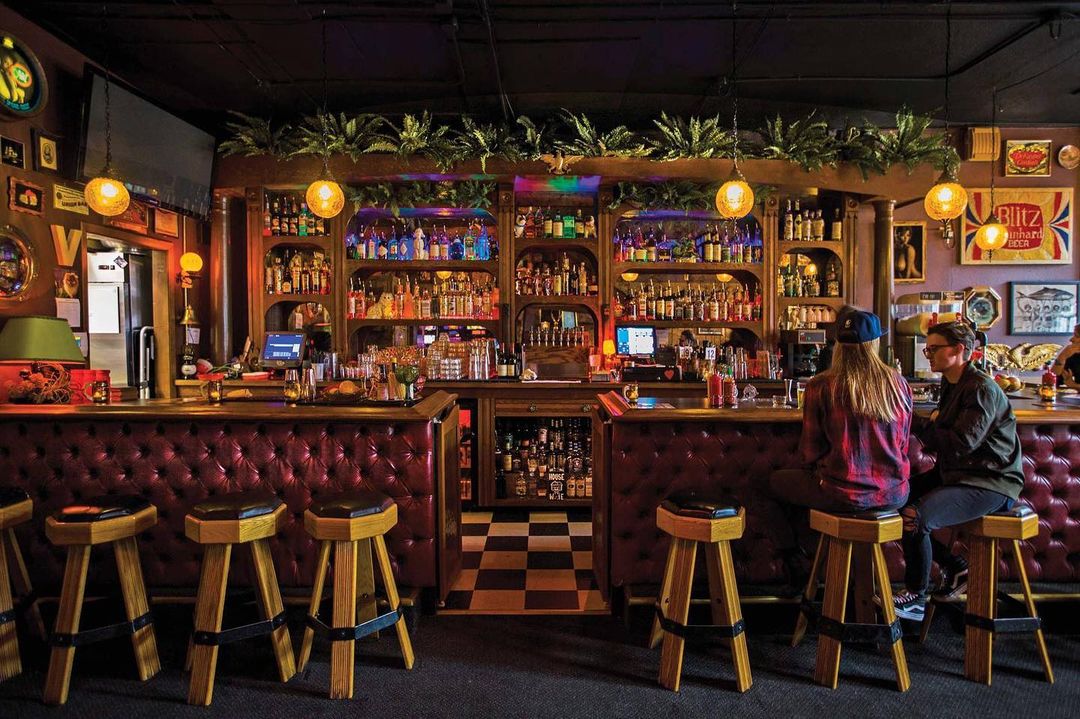
Another non-alcoholic bar is opening in San Diego this year
Lucky for her, there is another sober bar on the horizon.
Crystal and Kaylee Clark plan to open up their alcohol-free bar, Good News, this year once they secure a location. When the couple met as bartenders in Portland, they were drinking a lot—something that’s often part of the culture of the service industry.
“It’s literally encouraged,” Kaylee Clark says. “Whenever I would get to work, there would be a shot ready for me.”
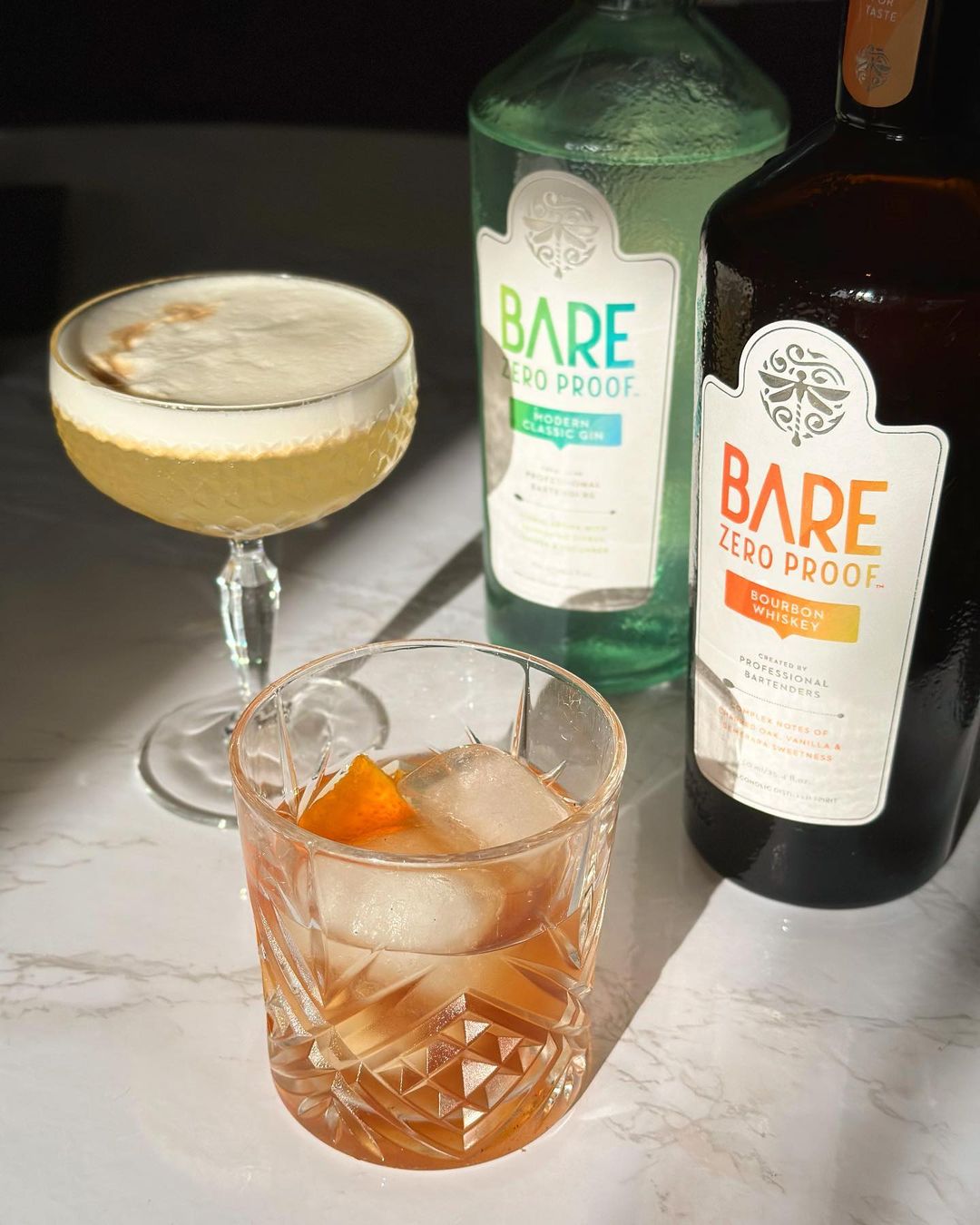
After simultaneously going through alcohol withdrawals while being sick with Covid-19 for the third time, they decided to get sober together in 2021. They relocated to San Diego a year later and came to the realization that options for a dry night out on the town were virtually nonexistent.
“We realized that there weren’t any spaces besides coffee shops, and they weren’t open late. We found ourselves almost getting depressed with nothing to do on certain nights,” says Kaylee Clark.
At this point, you may be wondering what makes a restaurant and bar so different from an NA-lounge if the former typically has a mocktails section on their menu.
Salazar admits that ANBA’s primary aim is to normalize NA beverages (and increase the variety) in already existing bars, restaurants, hotels and social events, making it just as easy not to drink as it is to do so. Though his organization is trying to cut down the timeline by educating businesses on how to integrate more sober options, he believes it’ll take at least another five to seven years for the hospitality industry to catch up.
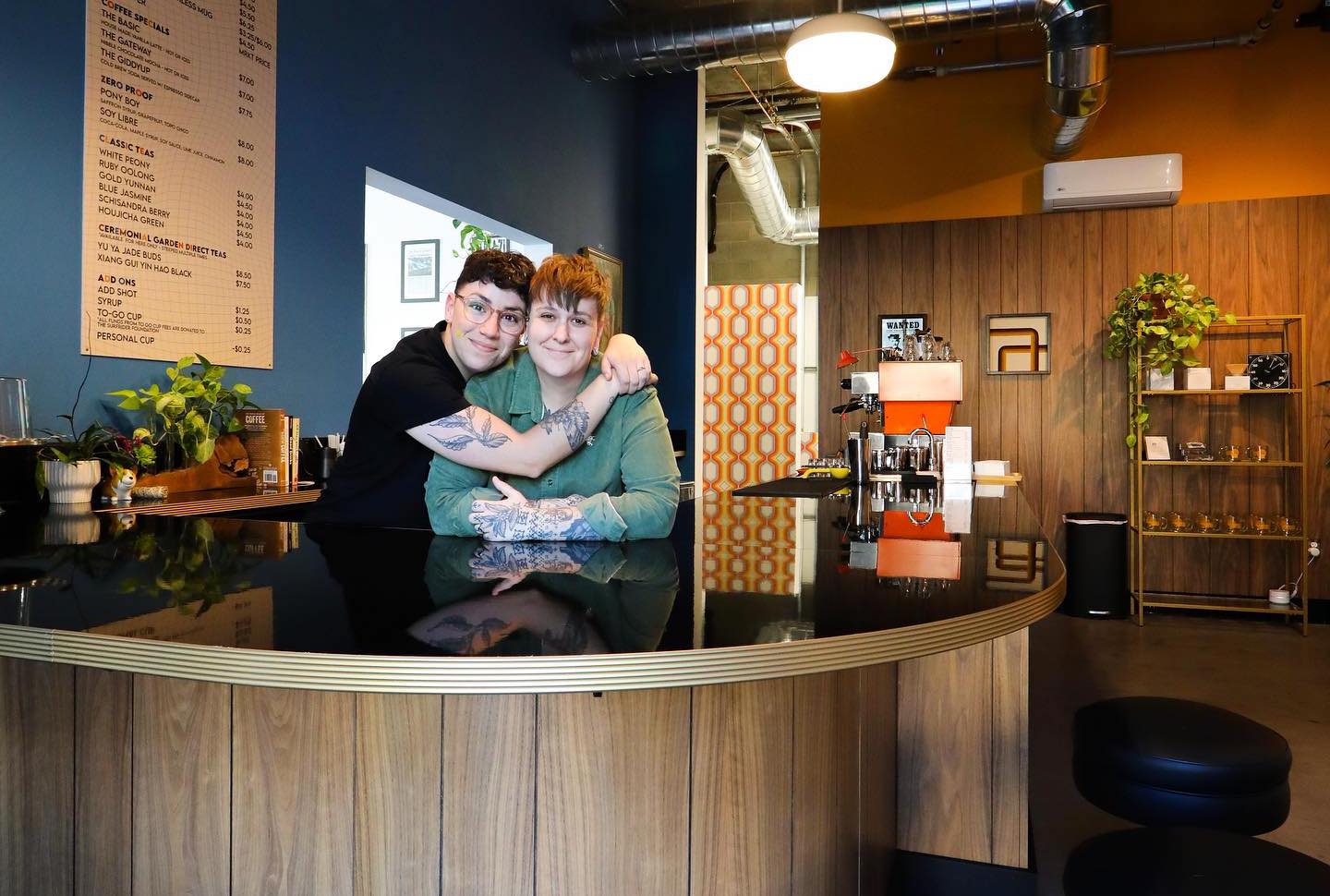
Why you may want to visit a sober establishment—even if you drink
In the meantime, NA bars can fill a need that other places are not yet equipped for: providing a wide variety of complex, well-crafted, alcohol-free drinks.
“There’s always going to be a tie between going out and having a tasty beverage,” Salazar says. “I think NA bars are able to establish and grow because existing restaurants and bars treat people who don’t want to drink like second-class citizens.”
At places where alcohol is served, it can be dangerous for those who are struggling with alcohol use disorder or alcohol abuse to accidentally be served an actual drink. Beyond the risk of accidental inebriation, not drinking at an establishment designed for drinking is hard. People who are trying to stay sober might find that it’s easier to do so in a space where everyone is on the same page. Plus, to be fair, not everyone wants to be around drunk people.
According to Mestecky, another perk of dry bars is that they have the tendency to be safe spaces. Sobriety doesn’t eliminate all the nightlife dangers that vulnerable populations face (such as women or young adults), but removing alcohol from the equation lessens the likelihood of bar fights, harassment, and potential violence.
“Even if you’re just drinking a soda water with lavender, there’s always a risk of a drunk patron coming up to you,” she says.
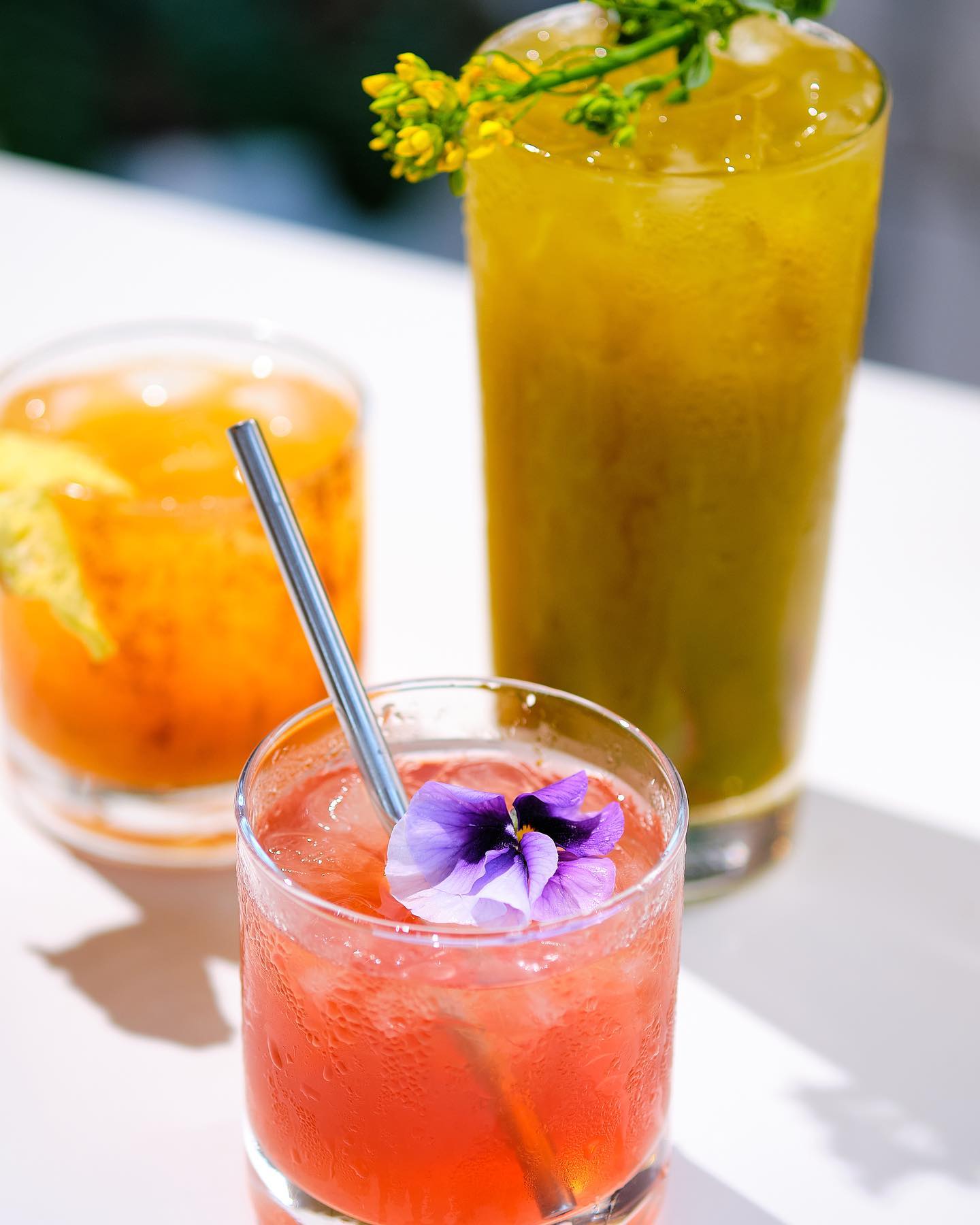
Why non-alcoholic cocktails often cost as much as their boozy counterparts
Even though the atmosphere may be judgment-free, the response to sober bars isn’t always as welcoming. Both the Clarks and Mestecky have faced criticism on the price point of NA drinks, which tend to be similar in cost to cocktails with alcohol. They say alcohol-free spirits, bitters, and tinctures are often just as expensive (if not more) as their boozy counterparts. An NA whiskey goes through the same distillation process as regular whiskey and requires additional steps for alcohol removal.
“If you want to create a really craft, nuanced taste, you have to go with the non-alcoholic spirits, which are mid-tier pricing,” Mestecky says. “There are no well non-alcoholic spirits. So we can get a lot closer to replication, where, before, you were still missing that ethanol bite of drinking a drink instead of chugging juice. I can take cool concepts from the alcoholic world, like milk clarifying and cryoconcentration, and put them into non-alcoholic drinks to make them have the same satiety and interest factor. It’s definitely difficult, but it’s also insanely fun.”
Moon Flower’s beverages run from $5 to $14, while Good News’ bar program and its prices are still TBD. But Kaylee Clark says their aim is to provide a wide range of accessible drinks, some of which will be more complex than others. In just the past year alone, she’s noticed a significant upswing in high-quality ingredients for zero-proof drinks that expand the creative potential of what bartenders can do. Five years ago, she doesn’t think an NA bar would have worked. Now, the possibilities for NA cocktails are endless.
NA cocktails—not “mocktails.”
That term will be intentionally absent from the Good News menu, because the Clarks aren’t whipping up juice-forward, sugary alternatives to the hard stuff. They’re going light on the spirit replacements and instead crafting unique, standalone drinks using seasonal fruit, local herbs, and adaptogens that they hope will appeal to everyone, sober or not.
“There’s a misconception that we’re opening a juice bar,” says Kaylee Clark. “I think it’s just a learning curve and one of those things people will understand more once we’re open.”
Much like the views from Mister A’s or the freshly caught fish from your neighborhood taco shop, part of what you pay for at a sober bar is the option to have one. Mestecky likes to remind the naysayers that vegan restaurants were once considered a trendy, niche market. Today, there are over 24,000.
“We all know the statistics about Gen Z drinking very, very little alcohol,” she says. “So [sober bars] are going to become a normal part of society and a lot less sensationalized. It’s like how veganism was five years ago. Now […] most cities have at least one really good vegan restaurant. No one’s really fighting them. It’s just a normal place for normal people to go.”
